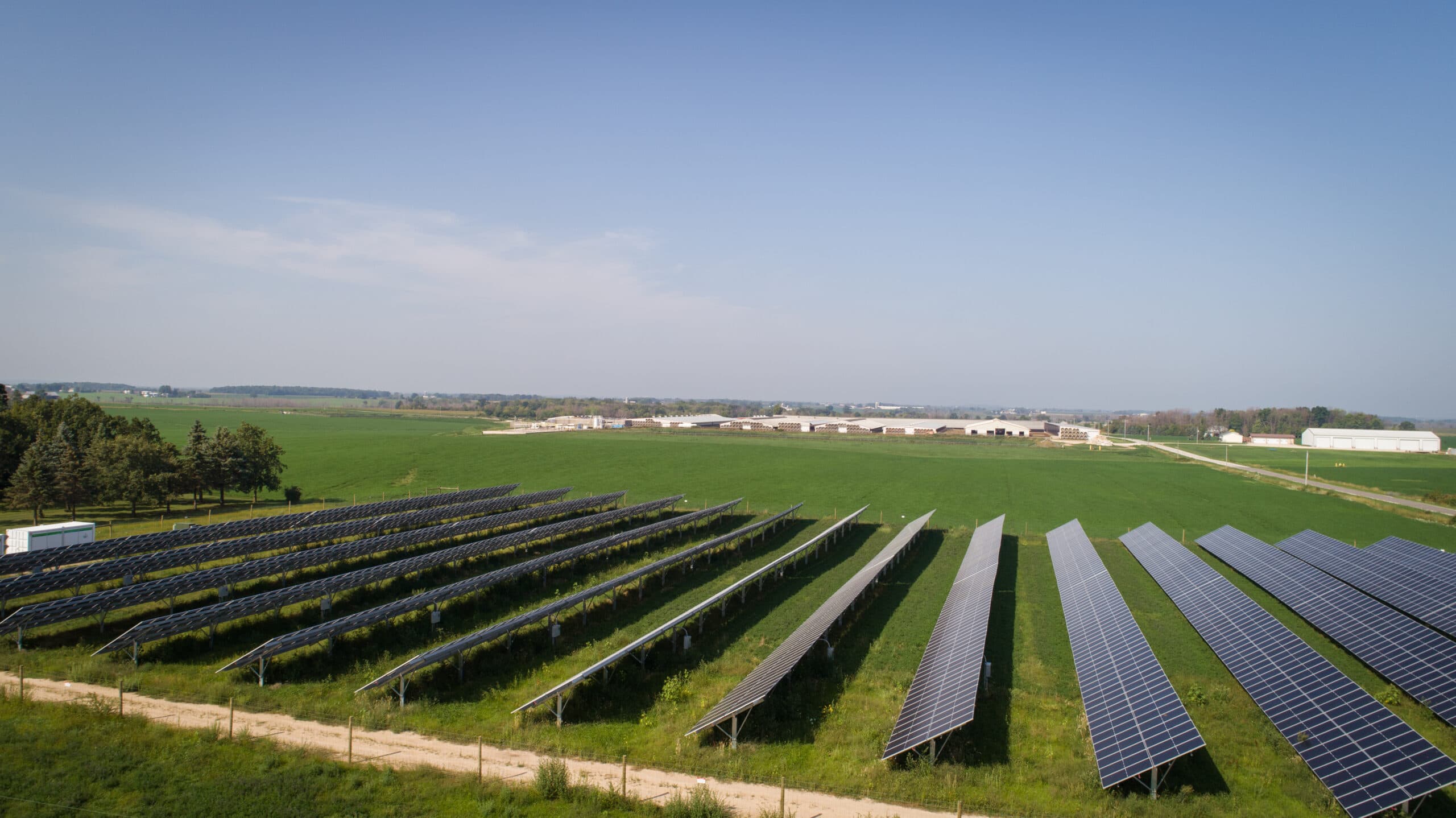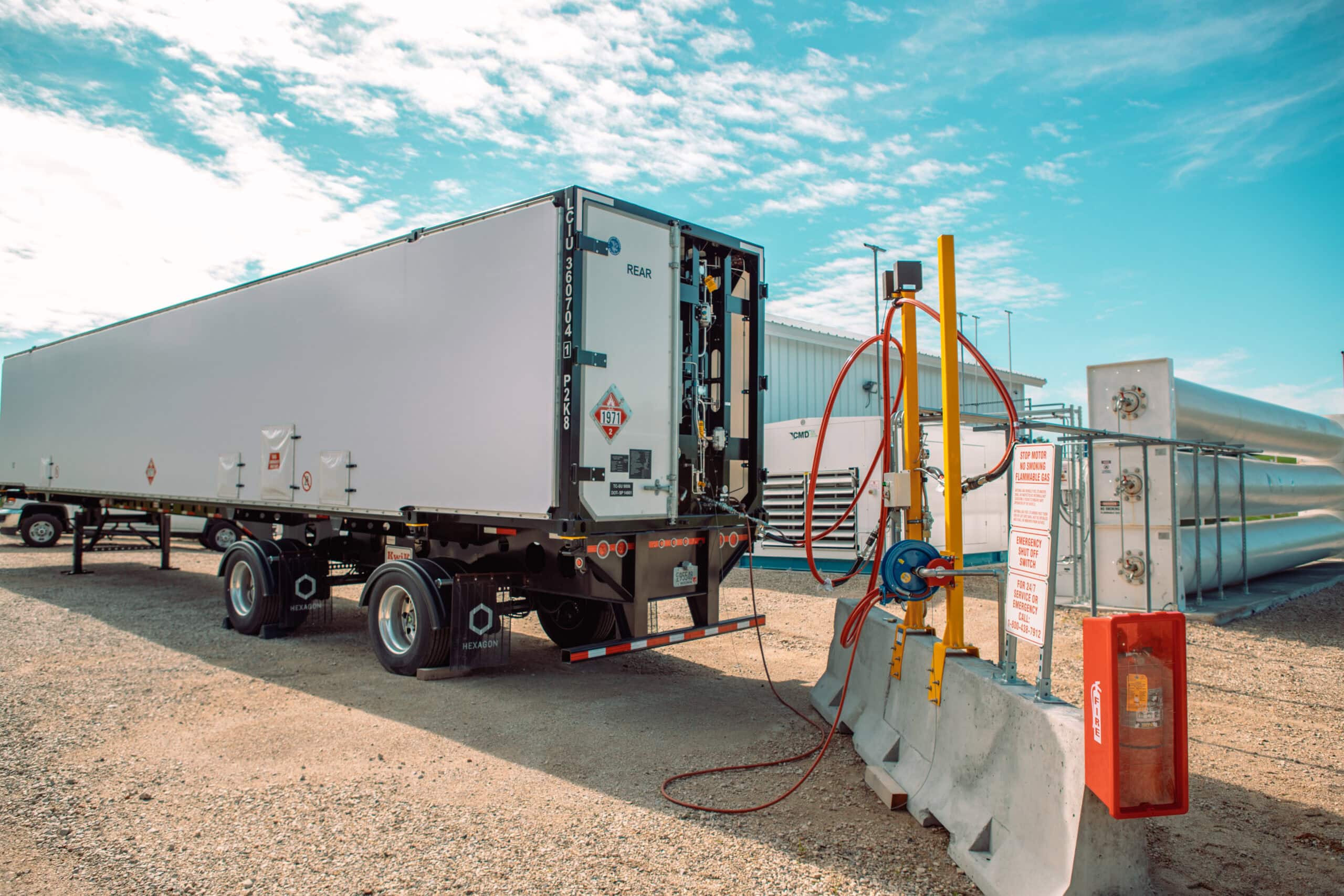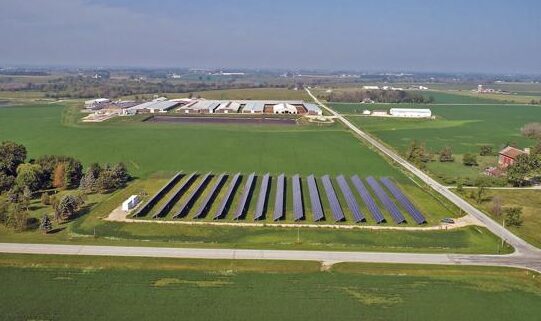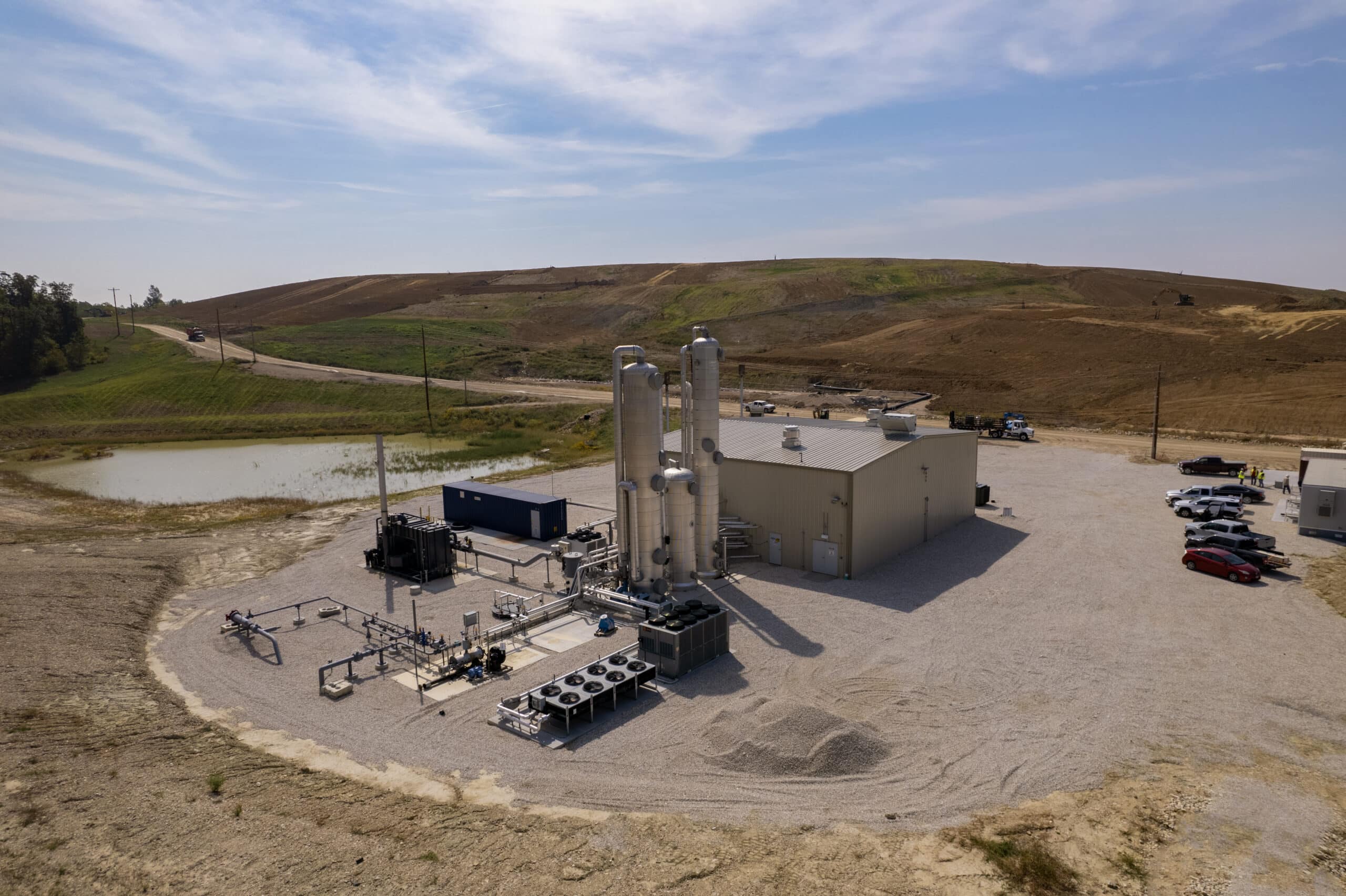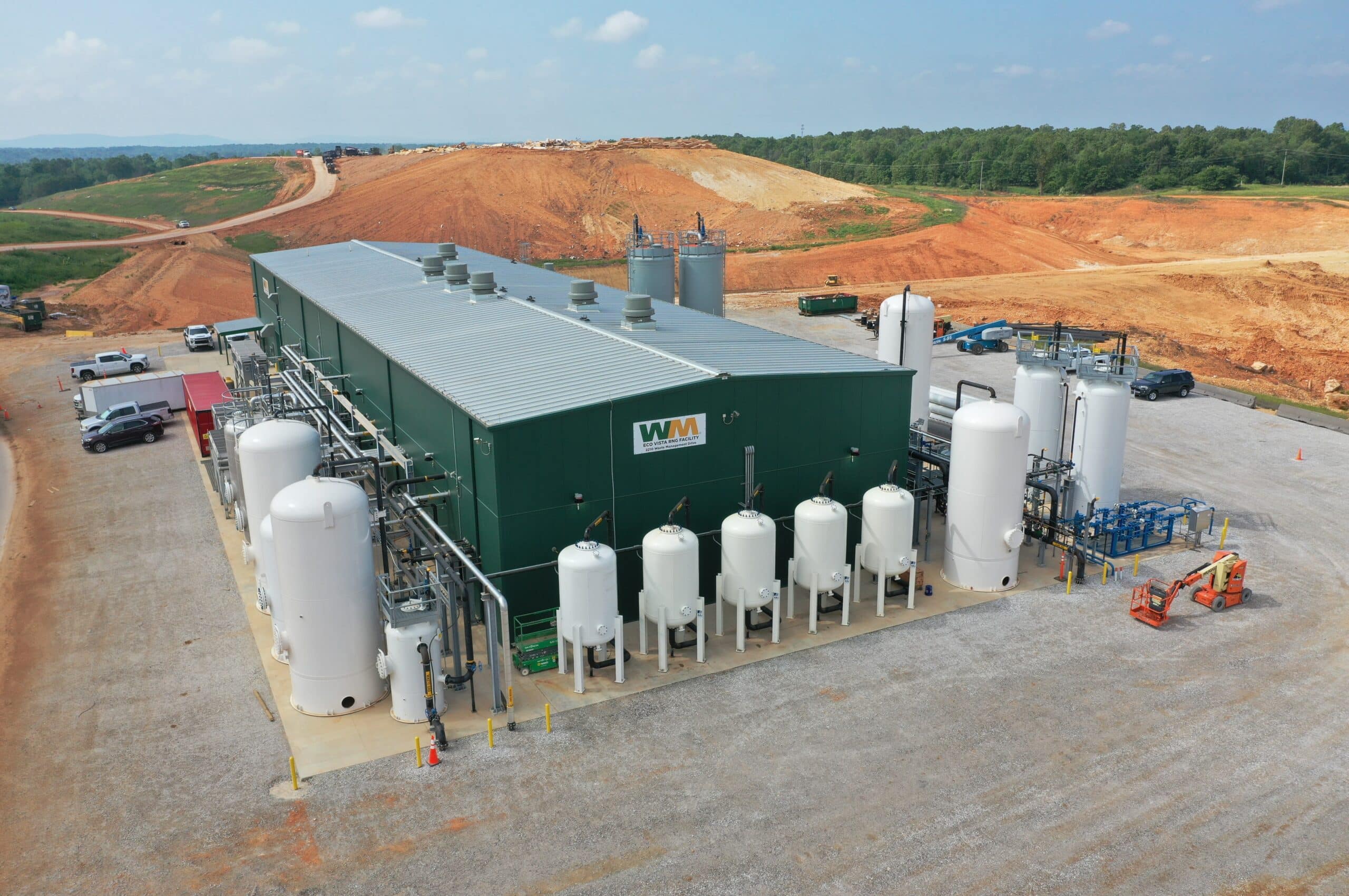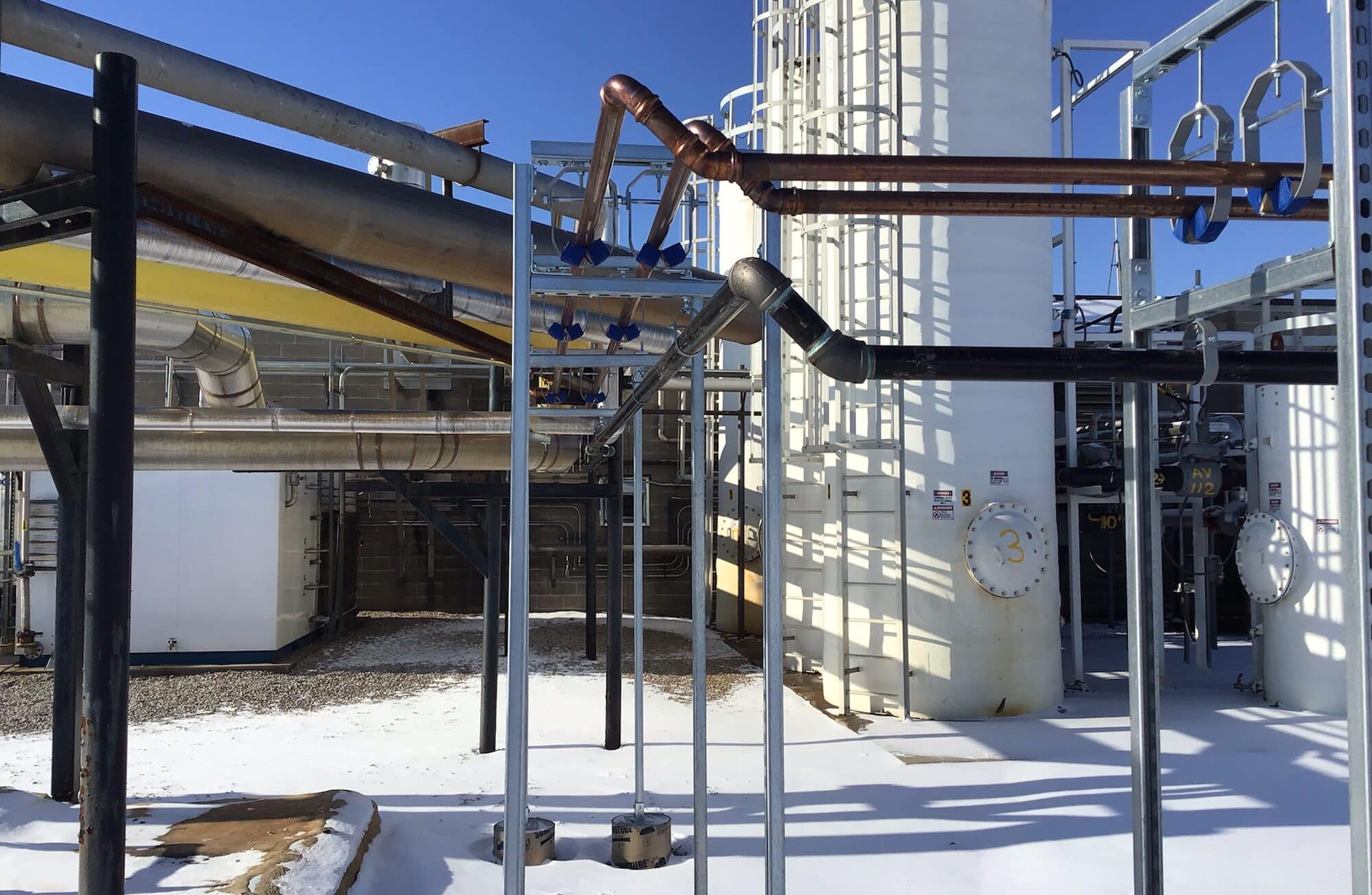Education Center / Solar Microgrids Benefiting RNG Development
Blog
Category: Agriculture, Renewable Natural Gas
Solar Microgrids Benefiting RNG Development
Energy and fuel producers are exploring new means to lower their project’s carbon intensity (CI) score—simultaneously reducing their environmental impact. How? In many cases, by using microgrids and combined heat and power (CHP) technology. But what exactly are these processes, and what benefits do they bring to renewable natural gas (RNG) development projects? First, let’s start with the basics.
WHAT ARE MICROGRIDS?
With a traditional energy grid, everything is connected to a centralized power source—meaning when power outages occur or repairs are necessary, all users connected to the grid are affected. Microgrids allow communities, cities, or businesses to become energy independent by providing backup energy supply in times of need or serving as a power source for areas that cannot easily be connected to the grid.
A microgrid itself is a small, localized grid powered by an energy source—in this case, solar power. While microgrids are connected back to the traditional grid, they’re also able to disconnect and function independently, using onsite generation to provide power for their supported loads. Microgrids operate either conditionally or continuously. In conditional settings, power supply is not consistent. It still depends on the traditional grid for power, but it can disconnect when circumstances allow or require. For example, if there is sufficient renewable supply on-hand, grid outages, or a desire for price management, microgrids can fulfill those needs. Continuous microgrids on the other hand provide 24/7 operations—offering a consistent power supply for connected loads.
As of 2021, there were 461 operational microgrids across the United States—collectively providing 3.1 gigawatts of reliable electricity. Currently, microgrids are most utilized by universities, the military, communities, and commercial applicants. When it comes to agriculture, microgrids are still a new concept to many—showcased through the seven operational microgrids in this space. However, we see that figure growing substantially in the future, even more so the number of microgrids paired with combined heat and power (CHP) technology.
WHAT IS COMBINED HEAT AND POWER (CHP) TECHNOLOGY?
Also referred to as cogeneration, combined heat and power technology produces electricity and thermal energy at or near the point of consumption, simultaneously. But how does this process work? As a fuel or energy feedstock is used to generate electricity onsite, heat is created as a byproduct. Normally, this heat would be lost; however, by using CHP, it is recovered and repurposed for additional heating and cooling applications. As mentioned above, this technology is often paired with microgrids to supply thermal energy as well as baseload power—providing energy resilience and reliability.
HOW DO MICROGRIDS BENEFIT FARMERS & RNG DEVELOPMENT?
What does this mean for renewable natural gas projects? It all comes down to energy. RNG development is known to be energy-intensive, from digester heating to the energy used by facilities for gas clean up. This energy usage not only impacts project costs, but the associated environmental impact for that project. When calculating a CI score for your RNG supply, energy usage is factored into the calculation which, depending on where you live, can make a significant difference. As of 2021, fossil fuels accounted for 60.8% of U.S. electricity generation, renewables for 20.1%, and nuclear energy for 18.9%.
From an environmental standpoint, fossil electricity translates to a higher (worsened) CI score. However, by producing renewable-based electricity onsite and feeding that back to the microgrid, this is avoidable. A project’s CI score will be lowered by roughly 20 points for electricity usage and another 20-50 for the energy used to heat the digesters. Farmers can also save significantly on project operating costs: up to $5-7K a month on general electricity spend and an additional $9K for heating a digester during winter months.
WHAT’S NEEDED FOR A SUCCESSFUL INTEGRATION?
Solar generation is becoming a more common source of renewable energy—in fact, in 2021, 46% of all new, electricity-generating capacity came from solar power. However, when it comes to procurement, what many don’t know is that they can’t sell excess solar-based electricity to a third party, only a utility can. Additionally, they cannot purchase solar-based electricity from a third party or through the grid if they want it to count as renewable energy for a RNG project. They must produce it behind the meter (onsite) themselves: a consideration that requires space.
Ideally, farmers should locate their microgrid (and solar panels) as close to their digester as possible to minimize underground wiring and circuit lines. If the structural support allows for the weight, farmers can position solar panels on their barn roofs to avoid repurposing farmland. If rooftop solar panels aren’t an option, solar fields can be built on a piece of land that’s roughly five acres or larger.
Another crucial consideration is having onsite battery storage since your facility likely won’t be completely off the grid. During the winter months, you may have to pull some electricity from the grid whereas during the summer months, you might be able to push supply back to the grid. Battery storage enables you to store excess solar-produced electricity on sunny days (or warmer months when less heating is required), and then pull from this capacity again during cloudier (or colder) periods that demand additional heating.
HOW TO GET STARTED WITH MICROGRIDS AND CHP
Whether you already have an operational RNG development project or are looking to start one, solar microgrid integrations are a unique consideration that can make your RNG supply more competitive—thanks to a lowered CI score. For help getting started, reach out! Our team will help identify and implement the best approach given your unique project needs.

